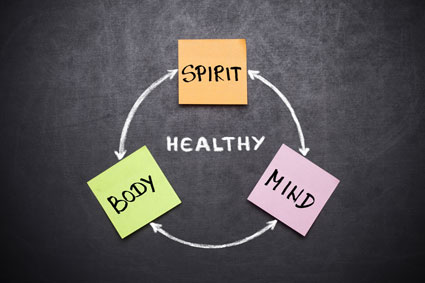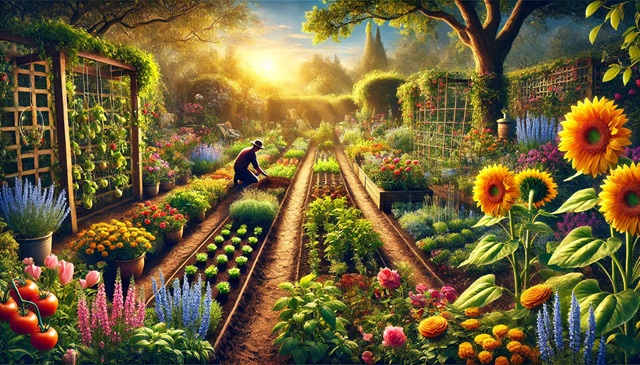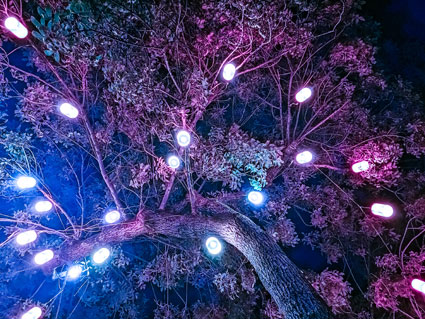INTRODUCTION
When most people think of Tuscany they imagine rustic homes, acres of olive and grape fields, and beautiful earth tones. Encompassing Tuscany in a decor takes familiar elements we've already discussed, but alters them for a style that's a bit more refined and dramatic than a Pastoral style room, but not as formal as Aristocratic design. In some ways it is reminiscent of Greco-Roman style, heavy on the Roman, however it's not as opulent, rather more simplistic in nature, ergo the Tuscan Simplistic title.
Tuscan Simplistic is rustic, natural, clean and put together. It features natural fibers, textiles, and materials, but easily makes room for intricately engraved stone and generous yards of fabric. The comfortable backdrop is favorable for most individuals. There is an apparent appreciation for the earth, food, relaxation, and presentation. The style works well for gathering rooms: family rooms, dining rooms, and kitchens.
In this article you'll learn:
- Top color choices for achieving a Tuscan styled room
- Textures and fabrics most aligned with the decorating theme
- Finishing touches to consider utilizing
- Style lesson on tricks for decorating a kitchen
- Creating a Modern Tuscan Simplistic style
A Tuscan Simplistic color palette should resemble a Tuscan hillside: warm, comforting colors like terra cotta, burnt sienna, yellows, greens, and lavender. Don't go bright and bold, it should be a simple, calm palette. This isn't the style for a bright, outrageous accent color, but that doesn't mean earth tones aren't beautiful- browse through pictures of the Tuscan countryside to see the incredible depth and variety of natural tones. Pick a favorite Tuscan image and pull colors straight out of it for the scheme.
The natural color palette offers an opportunity to play with painting techniques and create "natural" effects. Tuscany is known for its frescos and painted plaster, recreating the look takes a few tools and a couple of steps. Try creating texture in the paint by dabbing wet paint with a rag or dragging a straw brush across the paint for a woven look. Use different tones of glaze to create a fresco look which not only adds interest but hides imperfections in the wall. Doing a little research can uncover a multitude of easy painting techniques that can add dimension to a room's walls.
TEXTURES AND FABRICS
Sticking with the natural feel, opt for natural stone underfoot, even terra cotta or plaster walls and wood wherever able. For fabrics, options include not only natural cotton and linen, but damask or velvet can be used for understated drama with prints ranging from traditional sinuous patterns to modern Paisley designs. Look for stripes as well, they'll work great as a complementary pattern to other fabric choices. Steer clear of florals, they aren't traditionally part of Tuscan style.
Spread wool rugs to warm up the tile or wooden floors. Styles can range from colorful antique rugs to new cream colored, peppered with muted red scrolls. Be sure the colors in the rug fit the overall color scheme and the rug size fits the room's proportions. Here are some tricks for decorating with rugs:
- Rugs shouldn't be afterthoughts in a decorating scheme, choose a rug in the beginning, then use it's colors and patterns to make additional decor element choices.
- To anchor a floating seating area, place at least the front two legs of each piece of furniture on the designated area rug. If they don't fit, you need a bigger rug.
- Placing area rugs and runners on top of carpeting adds interest and decreases the natural wear of carpeting.
- A bold rug can be a focal point in an otherwise neutral room, while a neutral rug can downplay a bold piece of furniture.
- Bigger rugs tend to be more expensive. A tight budget trick is to lay a colorful area rug on top of a larger, cheaper natural fiber or neutral colored rug. The space from the larger rug will account for the proportion while the colors of the smaller rug will boost the look.
Like the other fabrics in a room's design, rugs play an integral role in pulling the whole style together. When chosen and laid out properly, they can truly polish a space.
FURNITURE STYLES
Tuscan style furniture should bring a timeless feel to the room. Look for simply designed wood pieces with a few curved legs or edges. The more delicate lines are a bit more elegant. Contrast wooden pieces with wrought iron side tables and stools, even better, look for pieces that mix both wood and iron.
FINISHING TOUCHES
Tuscan Simplicity calls for a mix of antiques, natural elements, and practicality. Polish off the look with a varied selection of items to mirror the traits:
- Old chests for storage
- Large stone carved urns filled with branches
- Glass vases of wine corks pay homage to Tuscan wineries
- Install wooden shutters on the windows instead of curtains. They are more traditional and serve double duty to help keep drafts out in colder months.
- Potted lavender looks beautiful and smells great
- A collection of wine bottles with tapered candles for ambient light
- Colored glass vases add delicate punches of color
- Add a small stone sculpture or two to showcase an appreciation of the balance between the artisanal beauty carved into raw natural stone. It's simple yet elegant, embodying Tuscan Simplicity perfectly.
Tuscan style easily gives way to an underlying theme of wine and wineries. A word of caution: don't get kitsch with a wine motif, handle it with grace. A jar of corks can be pretty and a wine cork bulletin board practical, but a sign that screams "It's wine time" fails to fit Tuscan elegance. Go easy on the wine related decor to keep the theme Tuscan and not vineyard tourist. To incorporate a wine theme elegantly into Tuscan Simplistic decor try:
- Hanging maps of wine regions or a well done poster dictating wine pairings. These are both informative and unique conversation starters.
- Getting ahold of a barrel used for winemaking. It's a suitable side table.
- Building narrow shelves and neatly line up wine glasses. The look is dramatic, yet simple. Be sure to make the dimensions of the shelving large enough for effect, but small enough to house all your wine glasses, the effect isn't as great with only eight glasses.
- Seek out a well constructed, wooden wine cabinet to store and display a wine collection. If your budget doesn't allow for such a cabinet, consider building a storage unit with diagonal planks of wood secured to the wall. Be sure anything homemade is sturdy.
- Find sophisticated wine artwork to include photography and paintings featuring the subject. Keep sophistication in mind.
- Stack books about wine, wine making, wine pairing, and grapes.
STYLE LESSON- CULINARY DECOR
The kitchen may be one of the more difficult rooms to decorate on a budget. It's often set in layout and space with expensive renovations to retile or rework any feature. There are some things that can be done to revamp the space, more so if one is willing to put time and effort towards serious do-it-yourself projects. Here are some ideas to get started, some with the Tuscan Simplistic style in mind:
- Paint the back splash or retile. Consider all tiling options from small, mosaic style to larger, space filling tiles. Choose a natural limestone or clean subway tile to modernize the Tuscan look. Another charming option is a picture depicted on tiles, usually centered behind the stovetop.
- Countertop replacement depends on the material. Easily cut-to-fit laminate is cheaper than slabs of granite, so being economically stylish means being creative. Budget friendly options include tiling the counter, or using a wood grain butcher block instead of stone. For a Tuscan inspired kitchen, wood block embodies the natural, simplistic traits and makes food prep a breeze. A final option ideal for smaller kitchens is simply covering unfavorable counters with large butcher blocks. It's not a permanent solution, but improves aesthetics.
- Changing the cabinets is dramatic and significantly alters a room. Painting and new hardware typically is enough. For a larger budget, changing out the cabinets altogether might be just the solution for not only decor but functionality. Finally, consider open shelving to display neat stacks of plates. A Tuscan style kitchen can feature a wide range of cabinets from open shelving to glass doored cabinets and classic wood doors, just be sure the look is in line with the natural, old world elegance associated with the style.
- Address space concerns. Creating more space in the kitchen boosts its functionality. Find space in drawers and cabinets by clearing out clutter and installing space savers like dividers or Lazy Susans. Hang pots on an overhead iron rack or wall peg board. This pot storage solution also cuts down time for tracking down a pot, making for a functional win. Space along a wall makes a perfect place for shelves. If there is enough floor space, add an island. The surface is additional work space, storage area underneath is a bonus, add two bar stools for extra seating, and a wheeled option can easily get out of the way. It's the ultimate decor win.
- A relatively easy project is switching out the faucets. Not only will new handles look better, but a newer model could make washing hands easier such as the popular touch-on models.
- Install task lighting under cabinets. There are plenty of battery operated models and plug in versions. Additionally, address overhead lighting- would a wrought iron chandelier complete the Tuscan style kitchen?
- Plant a small herb garden. Use stone pots or a natural basket to hold the pots for a Tuscan feel. Even better, display a collection of pots on a narrow table or small ladder next to a window. Make the arrangement as effortless and rustic looking as possible.
SURPRISING FIT- MODERN TUSCAN SIMPLICITY
There's an undeniable old world feel to the Tuscan Simplistic style. Modernizing the style makes it fresher while retaining the key elements of nature and elegant simplicity. The main tactic for breathing modern life into a style is brightening it up. For a modern Tuscan style, steer towards light tones (creams and grey) and dominant colors, then punctuate with dark rich woods and other earth tones. Alternatively, exchange the darker wooden pieces for blonder, almost white pieces, creating a very neutral palette. Make this interesting with one or two accents like rich burnt sienna or delicate lavender. Another option is contrasting the lighter fabrics and furniture with a rich, dark wooden floor. Here are some more ideas to try:
- Keep the color palette in the earth tone realm, but use lighter or brighter tones. A cream dominant color scheme showcases a subordinate terra cotta color while making the room look lighter.
- Avoid a neutral mundane appearance with a few carefully selected objects like a breathtaking large scale Tuscan hillside photo, or a large stone urn overflowing with lavender. A neutral backdrop puts these focal points centerstage.
- Neutral palettes also work well to showcase textures. Use rough pieces of tile on the wall or obviously knotty pieces of wood for shelves.
Modern and Tuscan Simplicity can co-exist beautifully, just stay adamant to the key components of natural materials and simple elegance. Again, when adding a component into the design ask which theme it represents and why, aim for components that satisfy both themes and balance singulars with one another.
SUMMARY
Tuscan Simplicity is a natural, elegant style that works well in most homes, specifically within gathering rooms. The earth tone palette is friendly, inviting, and comfortable. Furniture with clean lines and gentle curves are simple yet graceful, adding just a touch of formality to the style. Balance the formality with plush couches that enhance the casual aspect.
Stone or wooden floors can be warmed with rugs. Be sure to find the right sized rug for the room proportions and place with a purpose. Finish rooms with natural elements to include materials such as stone, branches, and wrought iron. Don't go overboard on winery related decor, sporadic touches of carefully chosen items maintain the elegance associated with Tuscan Simplicity.
Alter the style by combining it with modern elements such as bright white contrasts, and inclinations towards blond wood brighten the space for a fresher, modern feel. Try this technique for modernizing other styles.
Finally, don't shy away from redecorating the kitchen, assuming only expensive changes can freshen it. There are plenty of small, economical changes that boost the kitchen's functionality, individual decor, and cohesive design in terms of the surrounding rooms.
Key elements for achieving a Tuscan inspired style:
- Theme: Tuscan Simplicity is rustic, clean, and put together. It celebrates the natural earth, food, and togetherness with graceful flair.
- Color: the inviting Tuscan countryside inspires an earth tone palette of greens, browns, and reds. Lavender and yellows add calm cheerfulness.
- Textures and fabrics: Stick to natural textures and materials such as stone tiles, wood floors and furniture, and wrought iron embellishments. Thanks to the subtle flair of Tuscan style, the range for fabrics encompass both simple choices like cotton and dramatic fibers like damask satin.
- Furniture style: Timeless pieces work best. Look for clean wood pieces with a few curves such as on chair legs. Couches should be plush and comfortable. A few wrought iron pieces offer nice contrast, but should be used sparingly to avoid weighing down a room.
- Objects to pull it together: Obtain natural stone urns, bunches of twigs, and pots of lavender. Finishing touches should be natural with a bit of effortless elegance.
Words of caution:
- Tuscan style easily encompasses wine. Elegant components echoing this theme work well, but avoid a kitsch look with "It's time for wine" motifs.
- Use a proportionally appropriate rug and lay it down properly, anchoring all the furniture around it.
- Avoid too much wrought iron, it'll weigh a room down.
- When decorating kitchens, think functionality first. Open shelves are beautiful if kept tidy. If tidiness isn't a family trait, opt for covered cabinets or frosted glass doors.





























